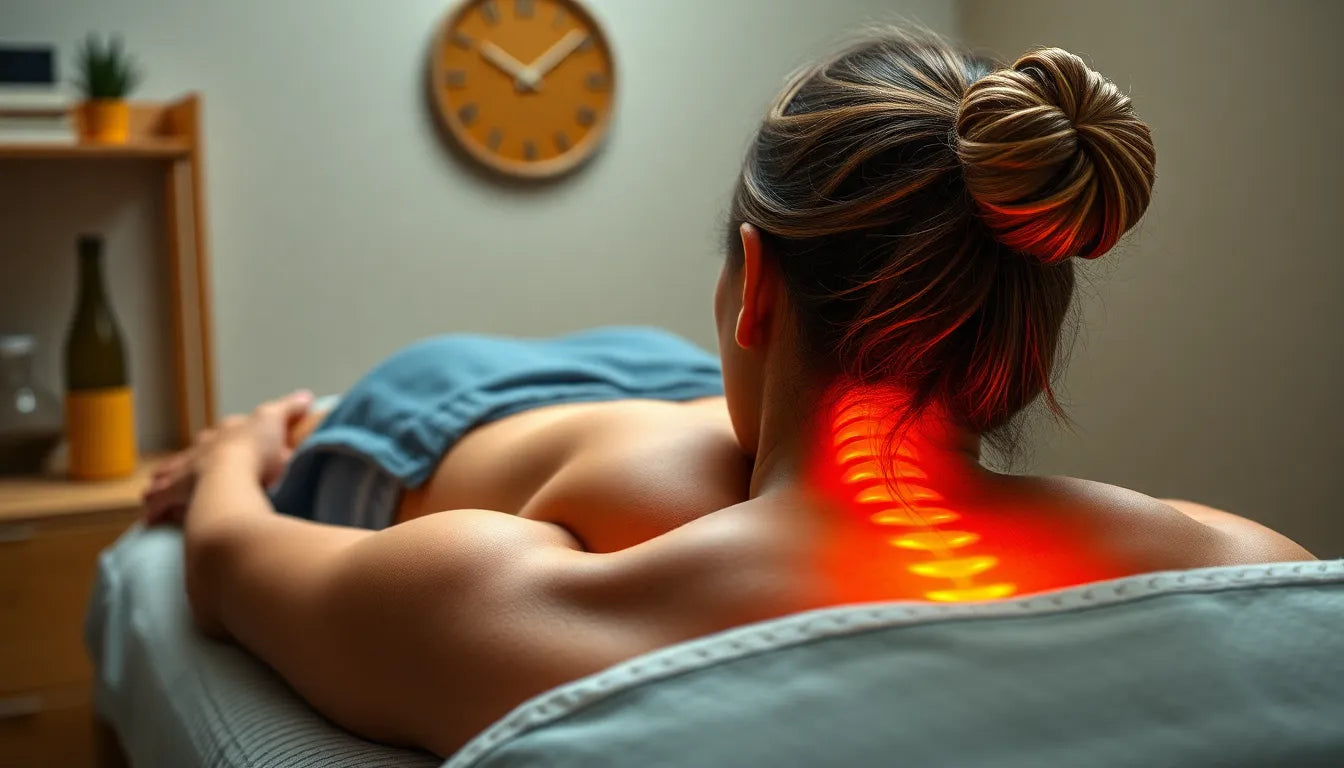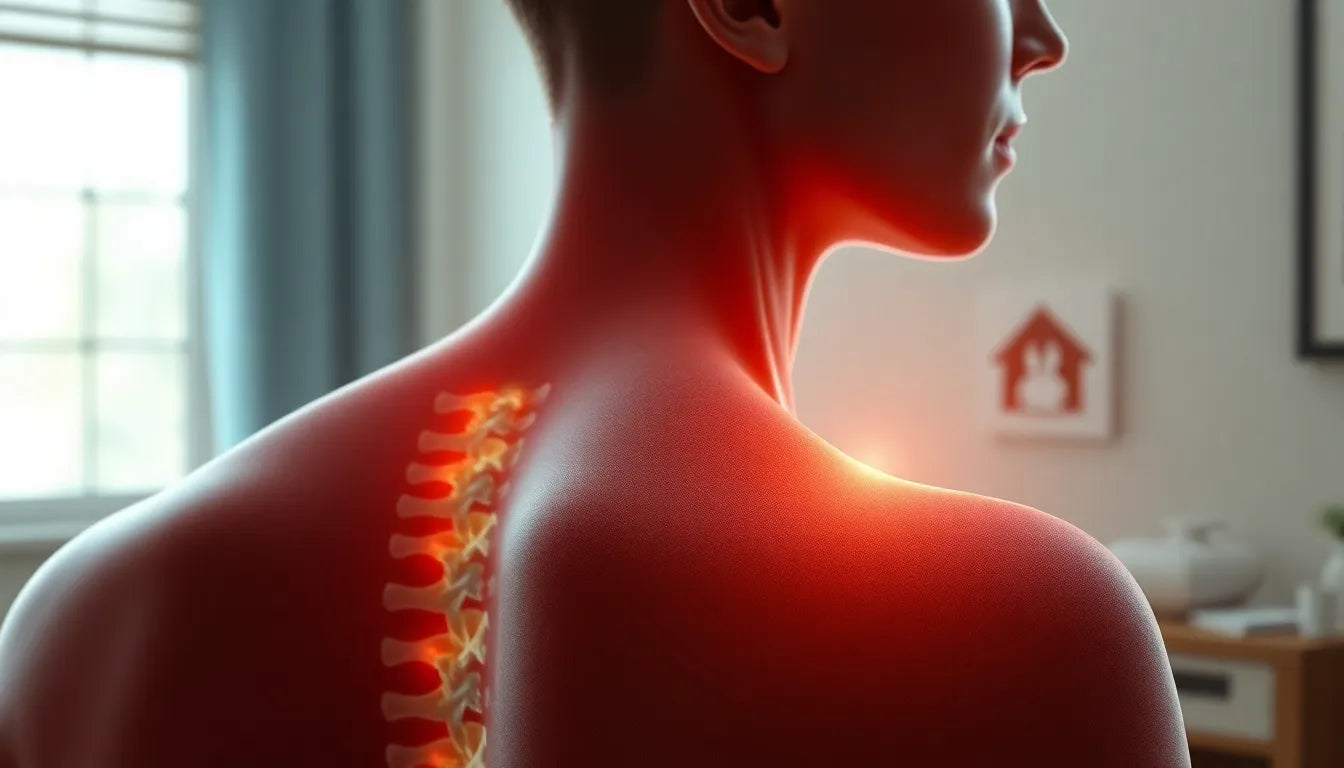Dealing with a herniated disc can be a daunting experience, but understanding what it is and how it affects your body is the first step toward managing it effectively. A herniated disc occurs when the soft, gel-like center of a spinal disc pushes through a crack in the tougher outer layer. This condition often leads to discomfort and can significantly impact your daily life.
Understanding a herniated disc
Herniated discs are a common spinal issue, often resulting from age-related wear and tear known as disc degeneration. As we age, our spinal discs lose some of their water content, making them less flexible and more prone to tearing or rupturing with even minor strains or twists. Improper lifting techniques and sudden pressure on the spine can also contribute to the development of a herniated disc.
The symptoms of a herniated disc can vary depending on its location in the spine. Commonly, individuals experience pain, numbness, or weakness in an arm or leg. If the herniated disc is in the lower back, it may cause pain radiating down the leg, a condition often referred to as sciatica. In the neck, a herniated disc can lead to pain in the shoulder and arm. The severity of symptoms can range from mild discomfort to debilitating pain, making it crucial to address the issue promptly.
The importance of early intervention
Early intervention is key in managing a herniated disc effectively. Prompt diagnosis and treatment can prevent further complications and significantly improve your quality of life. Ignoring the symptoms or delaying treatment can lead to chronic pain and potential nerve damage, which might require more invasive interventions.
There are various treatment options available for managing a herniated disc, ranging from nonsurgical approaches to alternative therapies and surgical interventions. Nonsurgical treatments are often the first line of defense and include rest, activity modification, and physical therapy. These methods focus on alleviating pain, reducing inflammation, and strengthening the muscles around the spine to provide better support.
Alternative therapies such as acupuncture, chiropractic care, and yoga can also play a role in managing symptoms, offering relief and improving flexibility and posture. In cases where nonsurgical treatments do not provide sufficient relief, surgical options like microdiskectomy or endoscopic diskectomy may be considered to remove the herniated portion of the disc and alleviate nerve pressure.
Understanding what to do for a herniated disc involves a comprehensive approach that combines medical advice, lifestyle changes, and possibly alternative therapies. By addressing the issue early and exploring various treatment options, you can find relief and regain control over your life.
Nonsurgical treatments for a herniated disc
For those dealing with a herniated disc, nonsurgical treatments often serve as the cornerstone of effective management. These approaches aim to alleviate pain, reduce inflammation, and promote healing without the need for invasive procedures.
Rest and activity modification
One of the simplest yet most effective initial steps in managing a herniated disc is rest. Allowing your body time to heal can significantly reduce inflammation and alleviate discomfort. However, complete inactivity is not advisable as it can lead to muscle weakness and stiffness. Instead, focus on modifying your activities to avoid movements that exacerbate symptoms. Incorporating gentle exercises such as walking, swimming, and specific yoga poses can aid in maintaining mobility and flexibility.
Physical therapy
Physical therapy plays a crucial role in the recovery process by strengthening the muscles that support the spine, enhancing flexibility, and promoting proper alignment. A physical therapist can tailor a program to your specific needs, focusing on core strengthening, stretching exercises, and posture correction. Below is a sample exercise table that highlights some beneficial exercises:
| Exercise | Purpose | Frequency |
|---|---|---|
| Pelvic Tilt | Strengthen core muscles | 10 reps/day |
| Knee-to-Chest | Stretch lower back | 5 reps/leg/day |
| Bird Dog | Improve balance & strength | 10 reps/side/day |
Pain medication and anti-inflammatory drugs
Medications are often used to manage the pain and inflammation associated with a herniated disc. Nonsteroidal anti-inflammatory drugs (NSAIDs), muscle relaxants, and pain relievers can provide relief and improve your ability to participate in physical therapy and daily activities. However, long-term use of these medications should be carefully monitored by a healthcare professional to avoid potential side effects.
Epidural steroid injections
For more persistent pain, epidural steroid injections may be recommended. This procedure involves injecting corticosteroids into the epidural space around the spinal cord to reduce inflammation and provide temporary pain relief. While effective, it's important to note that these injections are typically used in conjunction with other treatments, such as physical therapy, to achieve the best outcomes.
Exploring alternative therapies
In addition to traditional nonsurgical treatments, alternative therapies can offer complementary benefits for those with a herniated disc. These approaches focus on holistic healing and can enhance overall well-being.
Acupuncture
Acupuncture, an ancient practice involving the insertion of thin needles into specific points on the body, has been shown to help reduce chronic pain. Some studies suggest that acupuncture may provide relief by stimulating the release of natural pain-relieving chemicals in the body.
Chiropractic care
Chiropractic care involves spinal manipulation and adjustments to improve spinal alignment and reduce nerve pressure. It's crucial to ensure that such treatments are performed by a licensed chiropractor to avoid potential complications.
Yoga and pilates
Practices like yoga and pilates can be particularly beneficial for individuals with a herniated disc. They focus on improving flexibility, strength, and posture, which can alleviate pressure on the spine and enhance mobility. Recommended poses include the Cat-Cow stretch and Child's Pose, both of which promote gentle stretching and relaxation.
Incorporating these nonsurgical and alternative therapies into your treatment plan can provide a comprehensive approach to managing a herniated disc. By taking proactive steps and exploring various options, you can find relief and regain control over your daily life.
Surgical treatments for a herniated disc
While nonsurgical treatments are often effective, there are instances where surgery becomes necessary to address a herniated disc. Surgical interventions are typically considered when severe pain persists, nerve damage is evident, or nonsurgical methods fail to provide relief.
When surgery is necessary
Deciding to undergo surgery for a herniated disc is a significant step and is usually recommended when the condition severely impacts daily activities or poses a risk to nerve function. Common indicators for surgery include intense pain that does not improve with other treatments, significant muscle weakness, or loss of bladder or bowel control.
Common surgical procedures
Two frequently performed surgical procedures for herniated discs are microdiskectomy and endoscopic diskectomy. Both aim to relieve pressure on the spinal nerves by removing the herniated portion of the disc.
- Microdiskectomy: This procedure involves the removal of the herniated disc material through a small incision. It is highly effective for relieving nerve compression and associated pain.
- Endoscopic diskectomy: A minimally invasive technique that uses an endoscope to remove herniated disc material. This approach typically results in less postoperative discomfort and a quicker recovery time.
Recovery and rehabilitation
Post-surgery recovery is crucial for achieving the best outcomes. Patients are often advised to engage in physical therapy to restore strength, flexibility, and proper spinal alignment. Adhering to medical advice and gradually resuming activities can significantly enhance recovery and prevent future issues.
Frequently asked questions
What are the symptoms of a herniated disc?
Symptoms of a herniated disc include pain, numbness, or weakness in the affected area, often radiating to the arms or legs. The location of the herniated disc in the spine determines the specific symptoms experienced.
How long does it take to recover from a herniated disc?
Recovery time varies depending on the severity of the herniation and the treatment approach. Nonsurgical recovery may take a few weeks to months, while post-surgical recovery can extend over several weeks.
Can a herniated disc heal on its own?
Yes, many herniated discs improve with nonsurgical treatments and time. However, severe cases that do not respond to conservative measures may require surgical intervention.
Are there natural remedies for herniated discs?
Natural remedies include rest, gentle exercises, and alternative therapies such as acupuncture and chiropractic care. These can complement traditional treatments and aid in recovery.
Is it safe to exercise with a herniated disc?
Yes, exercising with a herniated disc is safe when following a program designed by a healthcare professional. It is important to avoid movements that exacerbate symptoms and focus on exercises that promote healing and strength.
Understanding the options available for managing a herniated disc, from nonsurgical to surgical treatments, empowers individuals to make informed decisions about their health. By exploring various approaches and adhering to medical advice, relief and improved quality of life are attainable.


















